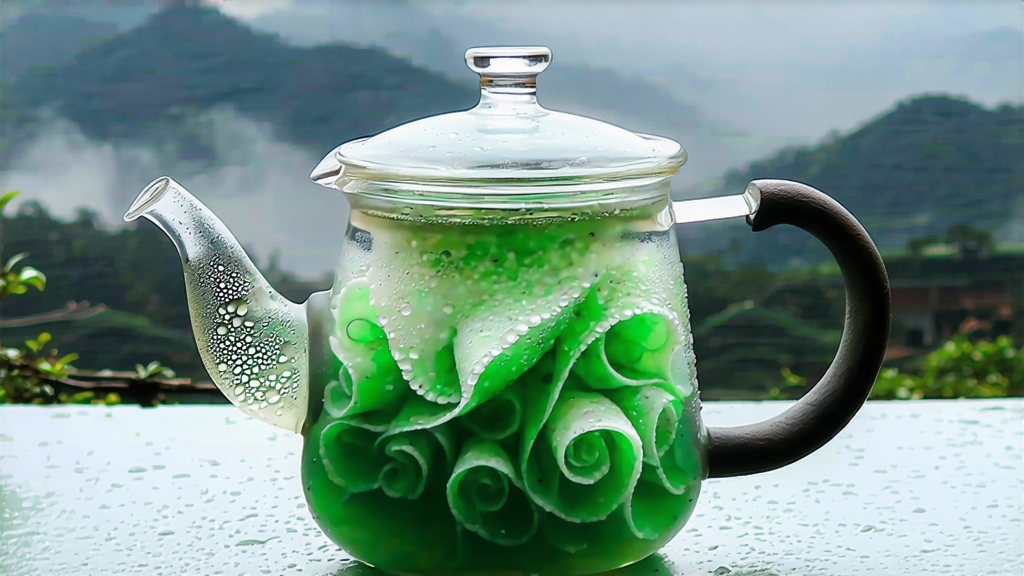
Among the pantheon of Chinese green teas, few names evoke as much poetry and precision as Biluochun. Literally “Green Snail of Spring,” this micro-rolled, downy-tipped leaf is grown in a microclimate so fragile that one week of mistimed sunshine can erase an entire year’s nuance. To the uninitiated it is simply a fragrant cup; to the connoisseur it is liquid geography, a sip that compresses 1,200 years of horticultural obsession into thirty seconds of aroma.
Origin myths cluster around Biluochun like morning fog. The most cited story places its birth in the Dongting Mountains of Jiangsu during the Tang dynasty, when a tea-picking nun wandering the cliffs noticed an unfamiliar perfume drifting from wild tea shrubs entwined with peach, plum and loquat trees. She infused a handful of buds, found the liquor “scary fragrant” (xia sha ren xiang), and carried the secret back to her temple. By the Song dynasty the tea had become tribute, carried by canal-boat to the northern courts where Empress Dowagers compared its scent to “spring water poured over jade.” The name itself was supposedly bestowed by the Kangxi Emperor in 1699 after he received a sample whose tight spirals reminded him of snail shells glinting in the dawn light.
Botanically, Biluochun belongs to the small-leaf Camellia sinensis var. sinensis, but the clone selected around Taihu Lake has evolved an unusually high ratio of monoterpenes to green-leaf volatiles, the chemical reason behind its signature fruity-floral lift. Growers recognize two authentic crus: the original Dongting East Mountain (Dong Shan) and the slightly cooler West Mountain (Xi Shan), both volcanic spines thrust into the vast freshwater lung of Lake Tai. Within these two appellations micro-plots are further classified by elevation, slope aspect and surrounding fruit forest. The highest grade, Mingqian Xiaosha—picked before the Qingming festival from bushes shaded by apricot blossoms—yields fewer than 300 grams of finished leaf per mu, less than the weight of a single iPhone.
Crafting Biluochun is a race against enzymatic clocks. Picking begins at 5 a.m. when dew still weighs down the two-leaf-and-a-bud sets, ensuring turgidity needed for the curl. Leaves are delivered to the village workshop within two hours in shallow bamboo trays to prevent bruising. Withering is almost imperceptible: ten minutes under a shaded awning just long enough for the edges to lose the crispness of raw bean. The kill-green step, however, is spectacular. A single wok, heated to 180 °C, receives 250 grams of leaves. The master’s bare hand becomes a whisk, flicking leaf masses skyward so they cool mid-air before re-landing. After ninety seconds the temperature is dialed down to 80 °C and the shaping phase begins. Palm and fingers press the leaves against the wok wall in clockwise spirals, coaxing the famous snail curl while evaporating another 30 % moisture. The entire firing lasts forty minutes, yet the leaf never experiences a second of rest; any pause would bake rather than bake-curl, flattening the bouquet. Once the leaves feel “cat-tongue dry”—still supple but no longer sticky—they are transferred to paper-lined bamboo baskets where they rest for three days, allowing residual heat to homogenize aromatics before final sorting.
To brew Biluochun abroad, begin with transparency: a double-walled glass so the foreign eye can witness the ballet. Use 3 grams per 150 ml of water cooled to 75 °C; hotter temperatures exaggerate catechins, turning the nectar into bitter lettuce water. Pre-wet the leaves for five seconds, discard this “awakening” infusion, then steep 45 seconds. The first pour releases a pale chardonnay liquor and an aroma that oscillates between white peach and fresh-cut narcissus. Second infusion, 30 seconds, intensifies umami, likened to dashi made from kombu and spring onion. By the fourth infusion the leaves fully unfurl, revealing miniature spearheads the color of alpine moss; the cup softens into melon rind and mineral finish reminiscent of wet slate. High-grade lots will yield seven infusions before surrendering, each a half-turn of the same spiral.
Tasting notes are best recorded on a polar coordinate wheel rather than a linear scale